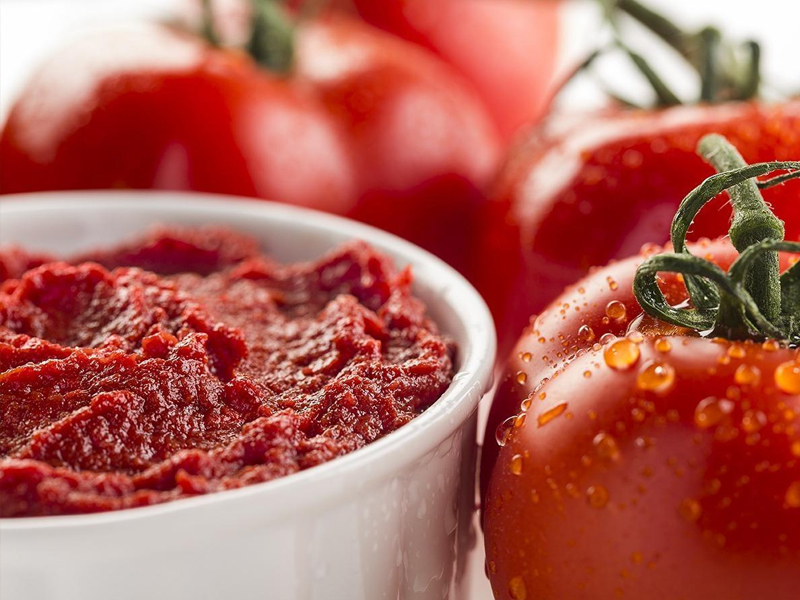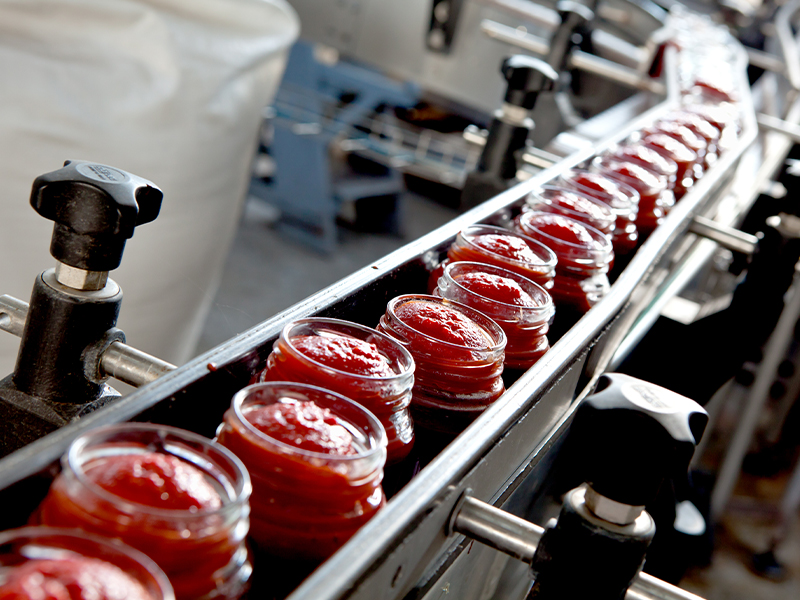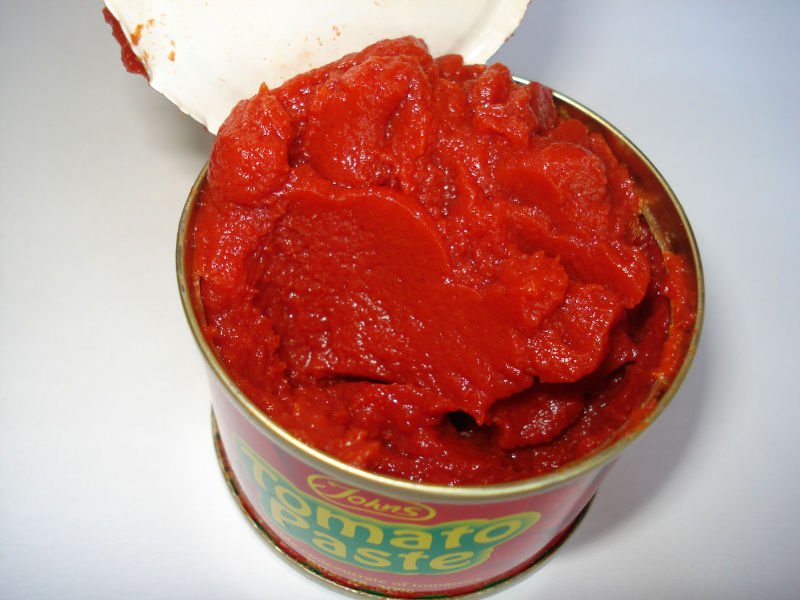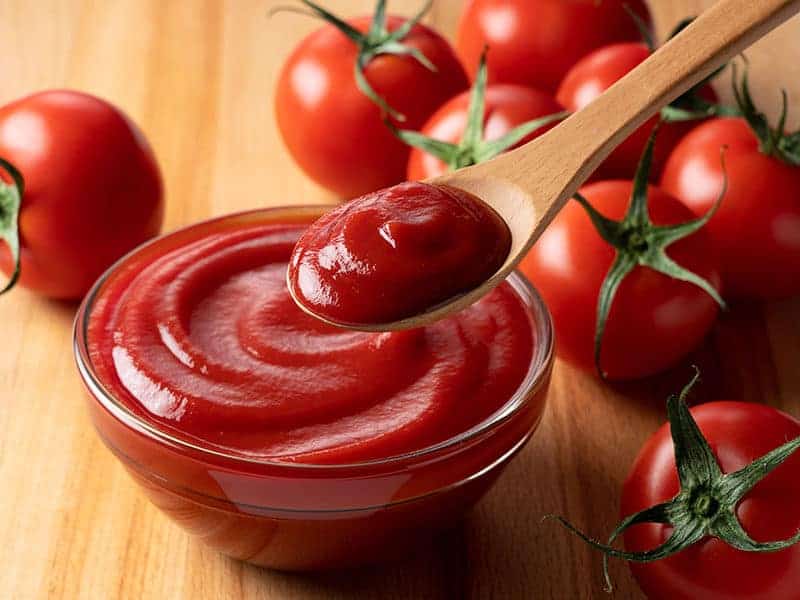Understanding the Differences and Uses
Introduction:
Tomato concentrate and tomato paste are common ingredients used in various culinary applications. While both are derived from tomatoes, they differ in terms of their processing methods, consistency, and flavor profiles. Understanding these differences is crucial for choosing the right ingredient for specific recipes. This article provides a comprehensive overview of tomato concentrate and tomato paste, highlighting their characteristics, uses, and storage considerations.
1. Tomato Concentrate:
1.1 Processing Method:
Tomato concentrate is created by removing much of the water content from tomatoes, resulting in a thick, concentrated form of the fruit. The process typically involves crushing the tomatoes and straining out seeds and skin, followed by reducing the liquid through evaporation.
1.2 Consistency:
Tomato concentrate has a thick and syrupy texture due to its high concentration of tomato solids. It is smoother and less chunky compared to tomato paste, making it ideal for inclusion in soups, sauces, and stews where a smoother consistency is desired.
1.3 Flavor Profile:
The flavor of tomato concentrate is more intense and concentrated compared to raw tomatoes. It has a punchy, umami-rich taste that adds depth and complexity to dishes. The concentrated flavors make it an excellent choice for applications where a robust tomato flavor is required.
1.4 Culinary Uses:
Tomato concentrate is frequently used as a base in various dishes, including pasta sauces, chili, curries, and marinades. It is valued for its ability to deliver a strong tomato flavor without adding excessive liquid or diluting other ingredients. Additionally, tomato concentrate can be reconstituted with water to create a tomato sauce or soup.
1.5 Storage and Shelf Life:
Tomato concentrate is often available in cans or tubes and is typically refrigerated after opening. It has a relatively long shelf life (usually around one year) due to its concentrated form, making it a pantry staple for many home cooks.

2. Tomato Paste:
2.1 Processing Method:
Tomato paste is produced by cooking tomatoes for a longer duration than tomato concentrate, resulting in a thicker consistency and more intense flavor. The process involves reducing the tomatoes by simmering them until most of the moisture evaporates. Some variations may include added seasonings or spices.
2.2 Consistency:
Tomato paste has a dense and thick consistency, almost similar to a concentrated form of tomato puree. It contains less moisture compared to tomato concentrate and has a sticky, paste-like texture. The thicker consistency of tomato paste makes it suitable for recipes where a robust tomato flavor and body are desired.
2.3 Flavor Profile:
Due to its prolonged cooking process, tomato paste has a cooked, caramelized flavor with concentrated sweetness and acidity. The longer cooking time enhances its deep, rich flavor, making it a popular choice for adding depth to dishes such as stews, gravies, and braises.
2.4 Culinary Uses:
Tomato paste is commonly used as a flavor enhancer and thickening agent in various recipes. Its robust flavor makes it suitable for adding richness to pizza sauces, pasta sauces, meatloaf, and even homemade ketchup. Tomato paste can be used as a standalone ingredient but is commonly diluted with water or stock to achieve the desired consistency.
2.5 Storage and Shelf Life:
Tomato paste is commonly available in cans, tubes, or jars and should be refrigerated after opening. It has a relatively long shelf life (ranging from six months to two years) depending on packaging and storage conditions.
3. Conclusion:
Tomato concentrate and tomato paste, although derived from the same fruit, have distinct characteristics and uses in the culinary world. Tomato concentrate’s thick and syrupy texture, along with its intensified flavor, lends itself well to dishes requiring robust tomato presence. Tomato paste, on the other hand, offers a thicker consistency and cooked flavor profile, making it a go-to ingredient for adding depth and richness to various recipes.
Understanding the strengths and differences between tomato concentrate and tomato paste allows cooks and chefs to select the most suitable ingredient for their specific needs. By keeping these distinctions in mind, individuals can create flavorful, well-balanced dishes that showcase the versatility of tomatoes.I. Tomato Concentrate in the Food Industry:

1.1. Use in Commercial Food Production:
Tomato concentrate finds extensive utilization in the commercial food industry. It serves as a key ingredient in the production of ketchup, tomato sauces, ready-made soups, and various condiments. The concentrated form allows manufacturers to add a robust tomato flavor to their products without excessively increasing the liquid content.
1.2. Benefits for Food Manufacturers:
Using tomato concentrate offers several advantages to food manufacturers. It provides a consistent flavor profile throughout the production process, ensuring that every batch has the desired taste. The high concentration of tomato solids also improves the shelf life of products, reducing the need for artificial preservatives. Additionally, the reduced water content in tomato concentrate allows manufacturers to extend the product without compromising its quality, resulting in cost savings.
1.3. Culinary Innovation:
Chefs and culinary professionals often use tomato concentrate in creative ways to add depth and intensity to their dishes. It is particularly favored in Mediterranean cuisines, where it is used in traditional recipes like Spanish stews, Italian sauces, and French ratatouille. The concentrated tomato flavor can elevate the taste of dishes while reducing the need for additional seasonings.
II. Tomato Paste in the Food Industry:
2.1. Enhanced Flavor and Texture:
Tomato paste plays a crucial role in enhancing the flavor and texture of various food products. Its concentrated nature allows for a stronger tomato taste, while the thick consistency adds body and richness. This makes tomato paste a popular ingredient for commercial pizza sauces, as well as pasta sauces, salsas, and meat-based dishes.
2.2. Versatility for the Food Service Industry:
The food service industry extensively employs tomato paste in a wide range of culinary applications. From pizzerias and Italian restaurants to cafeterias and fast-food chains, tomato paste is a staple ingredient for creating flavorful and aromatic dishes. Its versatility allows chefs to customize the acidity, sweetness, and richness of tomato-based sauces and dishes, ensuring customer satisfaction.
III. Packaging and Distribution:
3.1. Tomato Concentrate Packaging:
Tomato concentrate is commonly available in cans, tubes, or jars, ensuring ease of use and storage. Canned tomato concentrate offers a longer shelf life, while tubes provide convenient portion control. Jars allow for easy scooping and transfer to storage containers. The various packaging options cater to different consumer needs and preferences.

3.2. Tomato Paste Packaging:
Similar to tomato concentrate, tomato paste is also available in cans, tubes, or jars. Canned tomato paste is popular among food manufacturers due to its long shelf life. Tubes and jars provide convenience for home cooks, allowing them to use the required amount while keeping the remaining paste fresh for longer durations.
IV. Health Considerations:
4.1. Nutritional Content:
Both tomato concentrate and tomato paste retain many of the nutritional benefits of tomatoes. They are a rich source of vitamins A, C, and K, as well as antioxidants like lycopene. Lycopene has been associated with various health benefits, including reducing the risk of heart disease and certain types of cancer.
4.2. Sodium Content:
When purchasing tomato concentrate or tomato paste, consumers should be mindful of the sodium content. Some commercial brands may add salt as a preservative or flavor enhancer. Individuals on a low-sodium diet or those concerned about their sodium intake should opt for low-sodium or no-salt-added varieties.
V. Home Cooking Tips:
5.1. Reconstituting Tomato Concentrate:
To use tomato concentrate as a sauce or soup base, it can be easily reconstituted with water or vegetable stock. The quantity of water needed will depend on the desired consistency and recipe requirements. Adding the liquid gradually while whisking will help incorporate the concentrate smoothly.
5.2. Diluting Tomato Paste:
When using tomato paste in recipes, it is common to dilute it with water, broth, or other liquids to achieve the desired thickness and flavor balance. Dilution ratios may vary depending on the recipe, but a typical guideline is to mix one part tomato paste with two or three parts liquid.
VI. Conclusion:
Tomato concentrate and tomato paste are key ingredients in numerous culinary creations, both in commercial food production and home cooking. While tomato concentrate offers intense tomato flavor and a smooth texture, tomato paste provides concentrated richness and body. Understanding their distinctions allows chefs, food manufacturers, and home cooks to select the appropriate ingredient for their specific culinary needs while unlocking the full potential of tomatoes in various recipes.










